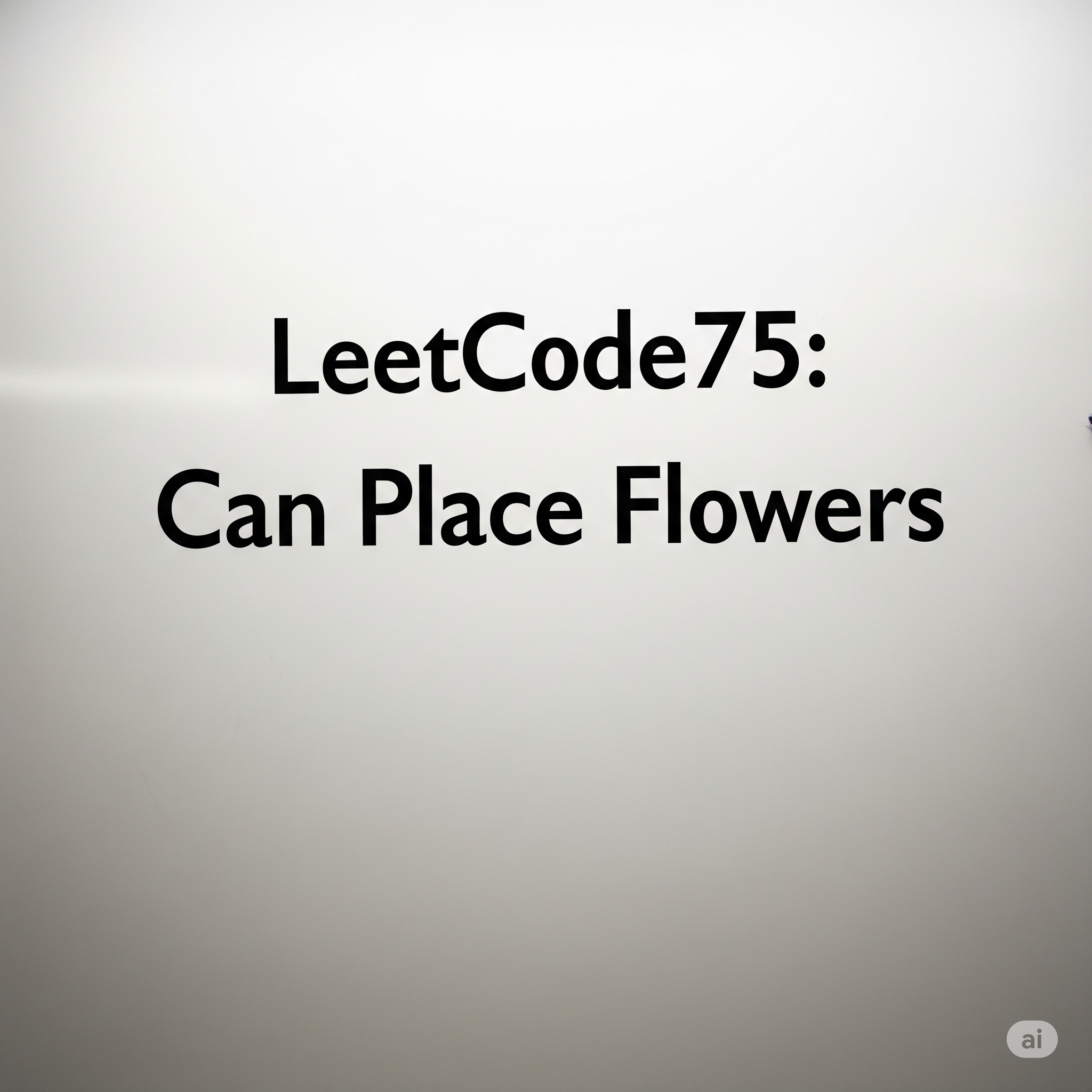Introduction
The Can Place Flowers problem is a classic greedy algorithm challenge frequently featured in coding interviews and study plans like LeetCode 75. In this problem, you’re given a binary list called flowerbed where 0 represents an empty plot and 1 represents a plot with a flower already planted. Along with this, you’re given an integer n, representing the number of new flowers you want to plant.
Table of Contents
The twist is that no two flowers can be planted in adjacent plots—meaning you must ensure that each new flower has at least one empty space between it and any neighboring flower. Your task is to determine whether it’s possible to plant n new flowers in the flowerbed without violating this rule.

You have a flowerbed represented as a list of 0s and 1s, where:
0means an empty plot.1means a flower is already planted.
You are also given an integer n, representing the number of new flowers you want to plant.
Rule:
Flowers cannot be planted in adjacent plots. That is, no two flowers can be planted next to each other.
Task:
Determine if n new flowers can be planted without violating the no-adjacent-flowers rule.
Example 1:
Input: flowerbed = [1, 0, 0, 0, 1], n = 1
Output: True
Example 2:
Input: flowerbed = [1, 0, 0, 0, 1], n = 2
Output: False
Constraints:
1 <= flowerbed.length <= 2 * 10^4flowerbed[i]is0or1flowerbeddoes not contain two adjacent1s0 <= n <= flowerbed.length
Python Solution
class Solution:
def canPlaceFlowers(self, flowerbed: List[int], n: int) -> bool:
i = 0
while i < len(flowerbed):
if flowerbed[i] == 0:
if i == len(flowerbed) - 1 or flowerbed[i + 1] == 0:
n -= 1
i += 2
else:
i += 1
else:
i += 2
return n <= 0
Step-by-Step Explanation
Step 1: Initialize Index Pointer
i = 0
- Start from the beginning of the
flowerbedarray. iwill be used to iterate through each plot.
Step 2: Loop Through the Flowerbed
while i < len(flowerbed):
- Continue until you’ve checked all plots.
Step 3: Check for Empty Plot
if flowerbed[i] == 0:
- If the current plot is empty, we consider planting a flower.
Step 4: Check Next Plot (or Edge Case)
if i == len(flowerbed) - 1 or flowerbed[i + 1] == 0:
- If this is the last plot OR the next plot is also empty, then planting is allowed (no adjacent flowers).
- Reduce
nsince one flower is planted. - Skip the next plot by moving
i += 2.
Step 5: Else Skip One Plot
else:
i += 1
- If the next plot is not empty, we can’t plant here, so move to the next one.
Step 6: Already Occupied? Skip Next
else:
i += 2
- If the current plot already has a flower (
1), skip the next one to maintain the no-adjacent rule.
Step 7: Return Result
return n <= 0
- If
nis0or less, returnTrue(successfully planted all). - Else, return
False.
Time and Space Complexity
- Time Complexity:
O(n)- We traverse the
flowerbedlist once.
- We traverse the
- Space Complexity:
O(1)- No extra space is used, just variables.
This solution uses a greedy and linear scan approach to check where flowers can be planted, making sure to skip adjacent plots as needed. It ensures no flower is placed where the rule is violated and handles edge cases effectively.


1 thought on “LeetCode75 : Can Place Flowers”